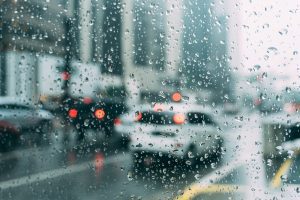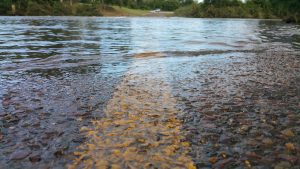17 Winter Driving Tips For Snow, Ice and Floods
To Get to Where You’re Going – Safer
When the snow starts falling, driving becomes more of a lesson in patience and skill than a race. Getting where you have to be in winter weather comes down to making the right choices, leaving yourself plenty of time, and planning ahead. Here are “17 Winter Driving Tips For Snow, Ice, and Floods” to get you to your destinations safer.
Snow and Ice – Winter Driving Tips
- Want vs. Need
Evaluate the trips you take during extreme weather. Do you just want a latte, or do you need to take your mother to her doctor’s appointment? Combine errands and only go out when necessary. - The Boy Scout Rule
Be prepared for getting delayed, stuck, or other winter emergencies. Pack food, water, a car phone charger, and extra warm clothes for each trip. Your trunk should always have a blanket, flashlight, first aid kit, jumper cables, shovel, ice scraper, de-icing fluid, and a bag of sand or cat litter (for traction if you get stuck). - Map It Out
In winter, plan to stick to the main roads which will be plowed first and treated with ice melting products. New to an area and not sure where they are? Check your city’s website. They usually list out the roads that are plowed first like this one from the City of Pocatello, Idaho. - Top It Off
Make sure that you are filling up with fuel when you reach half a tank versus letting it get too low. If you do get stranded, you’ll have fuel to keep the engine running and stay warm. - Bald = Slippery
Tires that are worn out will not give you as much traction as newer ones. You could end up in a ditch or a multi-car pile up if your tires are bald. - Do the Whole Job
Cleaning the entire car takes more time, but it will keep you safer on the road. Don’t just drive with a peephole in the front windshield that the defroster has thinned out. Use de-icer fluid or a scraper to make sure you can see what’s coming at you. Be sure to clean the mirrors, side windows, front and rear lights, and even the roof of the car. A big pile on the roof can slide down and completely block your view. - Keep It Smooth
Smooth and slow are the keys to safe driving on snow and ice. When you steer, accelerate, and brake smoothly and efficiently. It will be safer than abrupt changes and maneuvers that can result in a loss of control. - Give the Brakes A Break
Safe winter driving means using your brakes less. Downshift to slow your car versus applying the brakes. And if you start to slide, take your foot off of the accelerator, and turn INTO the slide versus away from it. Don’t overcorrect or you will start to slide in the other direction.
Rain – Winter Driving Tips

- Give Yourself Some Room
In wet conditions, the roads will be more slippery, especially in drier climates that don’t get much moisture. The highways and streets in Arizona, for example, have layers of dried oil, grease, and other fluids on top. Driving when it’s dry is no issue at normal speeds, but when it rains, those fluids become liquid again and make the roads even more slippery. Give yourself more than the recommended one car length between you and the car in front of you. - Don’t Be A Jerk
Like driving on snow and ice, driving in rainy conditions requires smoother, slower turns and braking. Jerky, abrupt movements will be amplified when the roads are wet and can cause a spin-out. Smooth turns and slower braking will ensure you arrive safely. - Not the Time to Cruise
Cruise control (or as I like to call it “ticket control”) is a wonderful feature when it’s dry outside. It can help you regulate speed, conserve fuel, and reduce driver fatigue. But when it’s wet and slick, it can increase your chances of losing control or not responding to fast-changing conditions rapidly. - Middle of The Road is Best
As many of you know, roads are built with a “crown” in the middle to allow for drainage to the sides of the road. So, when driving in rainy weather, the best practice is to drive in the middle lane. There will be fewer puddles and runoff. You’ll be able to avoid the larger amounts of water safely. - Keep ‘Em Dimmed
When headlights are on the bright or high beam they will reflect off of the rain more and may impair your vision. Even if you are solo on the wide-open road, keep headlights dimmed for safety. - Wet Electronics Don’t Work
If you do break down, keep your hood closed. Even though it is an international sign of a car in distress, you can soak the electronic features of the car making it more difficult to start when roadside assistance arrives.
Floods – Winter Driving Tips

- Don’t Drive In the Deep
The rule of thumb for driving into high water areas is do not enter more than 6 inches of standing water or more than 4 inches of moving water. It doesn’t sound like much, but it can sweep you away before you know it. Stop and observe other drivers. If they’re turning around, so should you. - Slow and Steady Wins
If you do decide to cross, go through very slowly – in first gear or low. Stay to the middle (crown) of the road to be at the highest possible point. The air intake on many cars is also low at the front of the engine. Only small amounts of water can be sucked in before causing damage and performance issues. If you’re speeding, you will take in more water. Once you’re through, pull over to let the traffic behind you pass and check your brakes to make sure they are not failing due to being wet. Stop water from getting into the exhaust system by keeping the revs high by letting off the clutch or alternatively sliding the car into neutral and low. This will prevent the engine from stalling. - Aquaplaning – Not A Superhero’s Jet
One of the scariest feelings for any driver is when you’re traveling along at a good speed and suddenly hit a patch of water and aquaplane. It is when you lose control due to the tires not being able to get any traction on the road’s surface. If you do aquaplane, hold the wheel loosely and ease off the accelerator until you regain control.
We hope these 17 Winter Driving Tips are helpful. If you need help keeping winter roads safe, we offer liquid and granular anti-icing and deicing products like Ice Slicer and Meltdown. Learn more about all of our winter products here. Or you can contact one of our sales representatives in Arizona, California, Colorado, Idaho, New Mexico, Texas, Utah, or Wyoming.
Desert Mountain Corporation – Keeping Roads Safe Since 1990
(877) 718-3878
